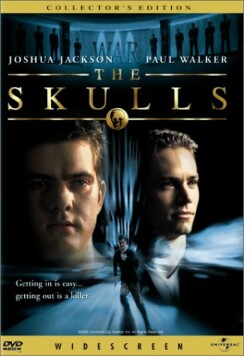Shall We Dance?
Shall We Dance? by Masayuki Suo is a Japanese film with all the charm
and delicacy of the best French movies. It surprises and delights with the
subtlety of its observation and the skill of its construction, and it moved me
deeply at several points. Koji Yakusyo stars as Mr Sugiyama, a rumpled and
tired- looking middle-aged corporation man who notices the face of the lovely
Mai (Tamiyo Kusakari) looking mournfully out the window of a dance studio every
day on his evening commute. The sight of her becomes so powerful to him that he
is drawn off his commuter train, in spite of a loving wife and daughter in the
suburbs, and thence out of his boredom and discontent into the world of the
dance.
The film explains to us that, in Japan, reticence about public touching
between men and woman makes ballroom dancing something of a shameful secret, and
Mr Sugiyama is shown nervously approaching the studio as if he were visiting a
prostitute. Soon, however, he is caught up in the thrill of dancing, along with
two fellow beginners, even more socially gauche than he is and a colleague at
work who calls himself
“Danny”
Aoki (Naoto Takenaka) and sees himself as a dashing sort and specialist in the
Latin American dances. Instead of Mai, who is a former Japanese champion and
semi-finalist at the world championships of ballroom dancing in Blackpool,
England, Mr Sugiyama’s teacher is
Tamako Tamura (Reiko Kusamura) an angelic, Beatrice-like figure who seems to
know just what everybody needs and arranges
everybody’s life for the best.
Fortunately, this does not include an affair between Sugiyama and Mai, but
something deeper in a way. She gives him special instruction so that he can take
part in a competition — instruction which is as much in the art of living as
it is in the art of dancing — and learns as much from him as he does from
her. Along the way there are wonderfully constructed comic moments with the
other two beginners, with Mr Aoki (who, like Mai and Sugiyama finds himself in
the course of the film being educated out of his self-conceit), with the most
prominent of their female partners, Toyoko Takahashi (Eriko Watanabe), and with
two detectives hired by Mr Sugiyama’s
wife to find out where he is going on Wednesday evenings — all of whom are
splendidly realized characters.
The little touches that make this film so delightful move in pairs in a sort
of cinematic dance of their own. So Mrs
Sugiyama’s tentativeness and shame
about approaching the private investigator are neatly symmetrical with her
husband’s approach to the dance
studio — which is the occasion of her investigation. Likewise, as Mai begins
to be drawn back into life and real people from the disappointment which has
produced her melancholy stare out of the window, she finds herself watching Mr
Sugiyama on the station platform, practising his steps with an invisible
partner, just as he used to watch her through the same window
before he came inside. She must learn not to dance selfishly, to trust her
partner to lead, just as he must learn to lead with boldness and purpose without
sacrificing tenderness.
They learn these things from each other, but the benefits of what they have
learned are destined in each case for somebody else. Thus, part of what makes
for the emotional power of Shall We Dance? is that they are given one
last dance to sum up the eternal poignancy of the might-have-been. It is a
rather obvious device, but it points up the way in which the intersection of
their lives has paradoxically enabled Sugiyama to give up the dancing and Mai to
go on with it. They are travelling in opposite directions, but the loveliness of
their moment together is thoroughly captured in the beauty of that dance, and in
the closing images from the world ballroom dancing championships at Blackpool.
This is a gorgeous little film, fully deserving of the highest accolade.
Discover more from James Bowman
Subscribe to get the latest posts to your email.








